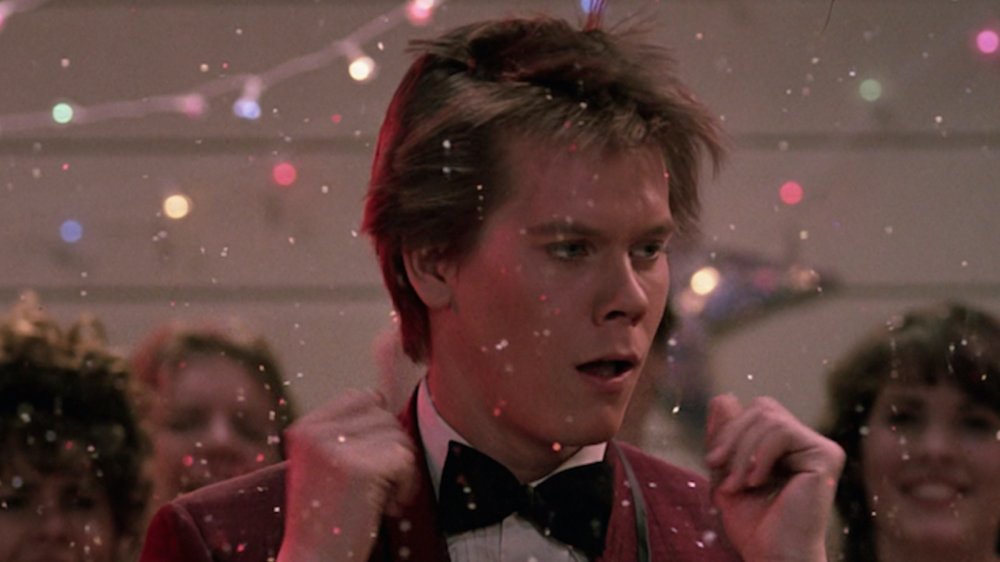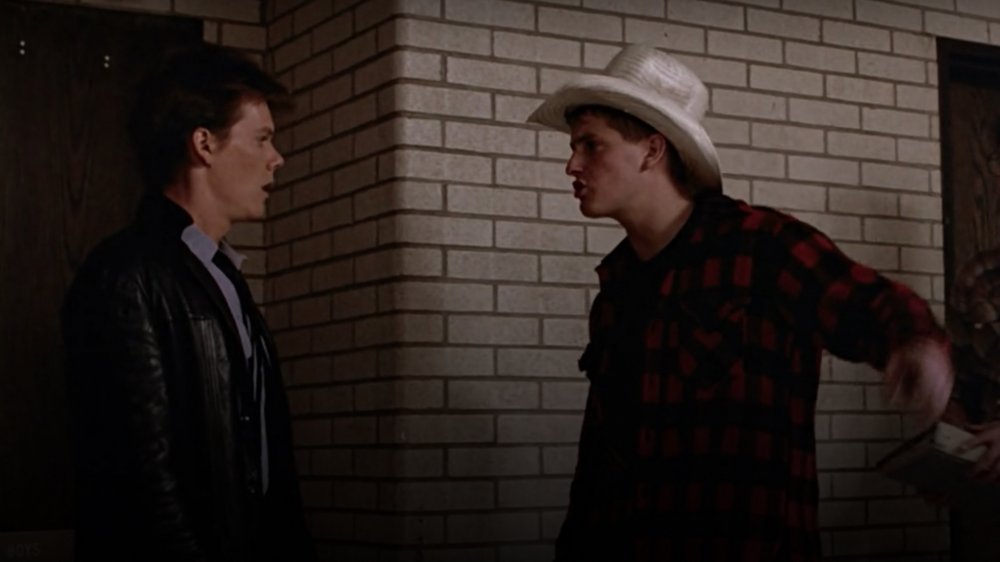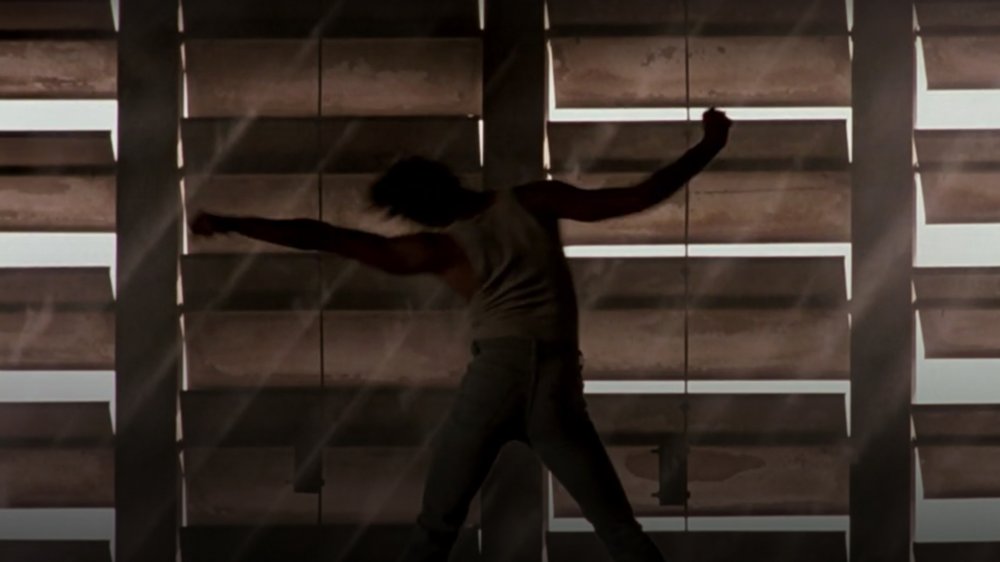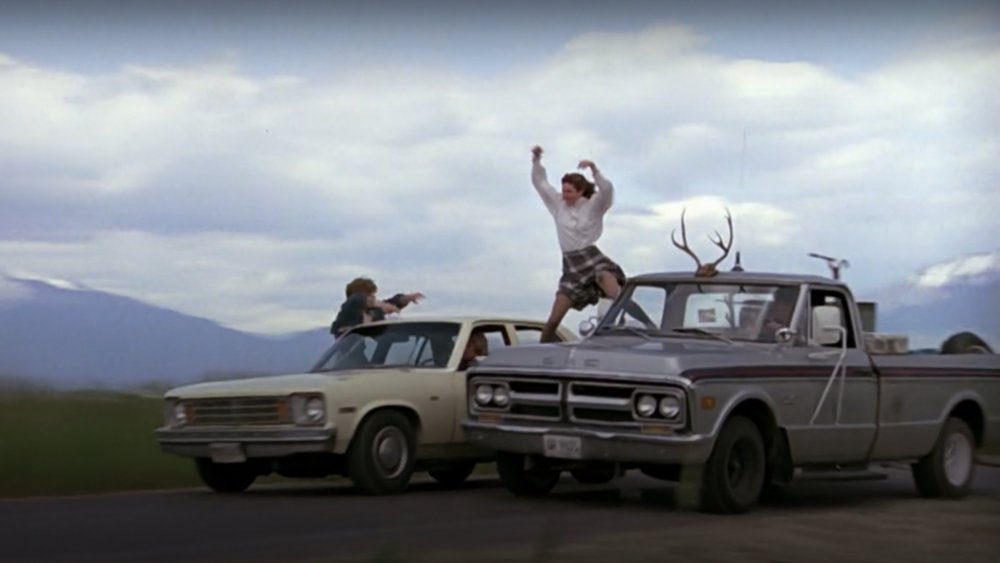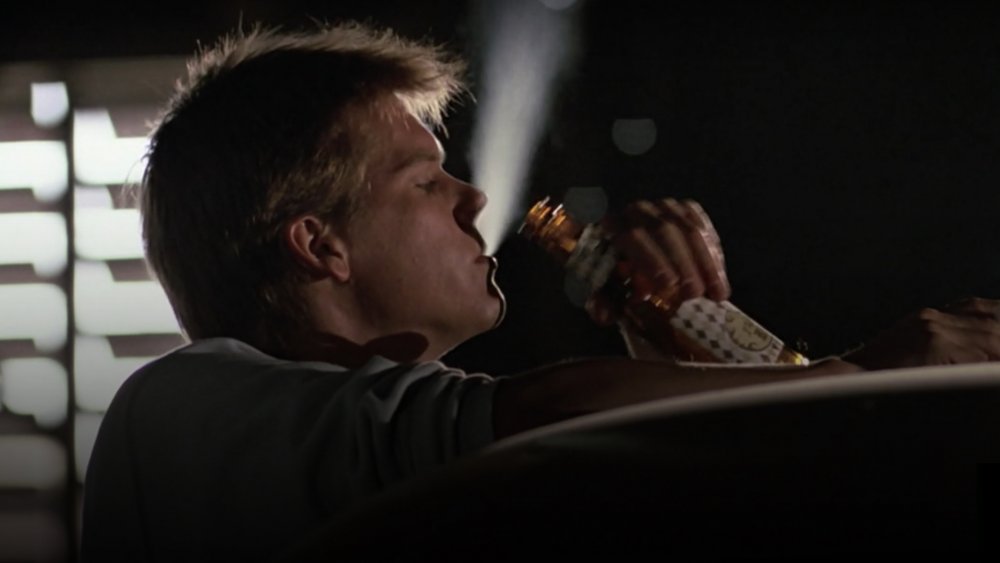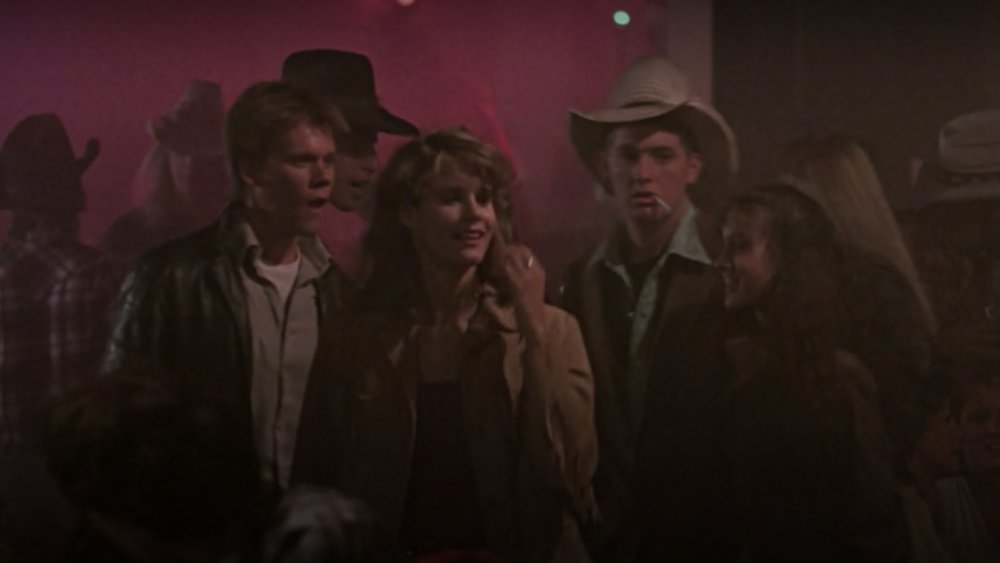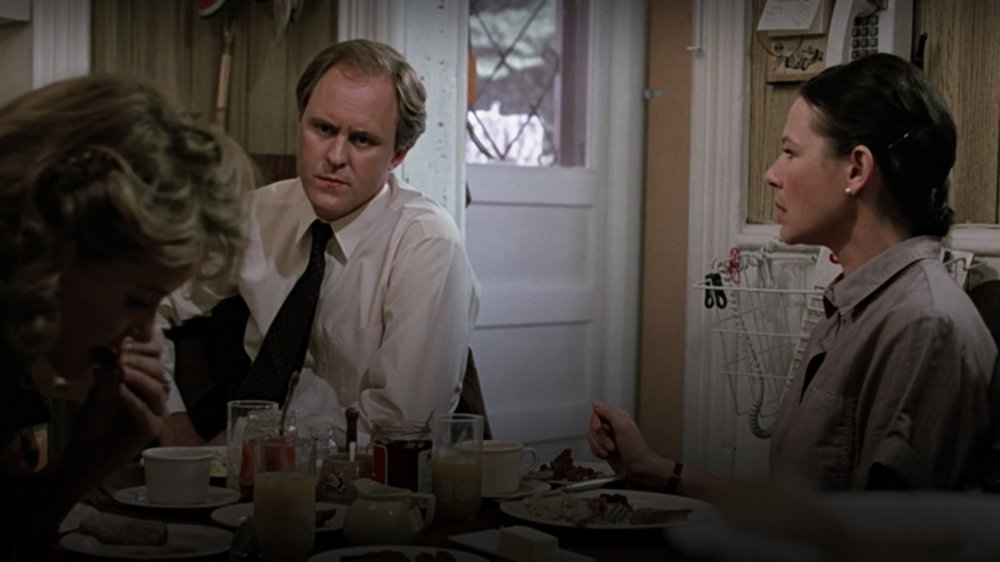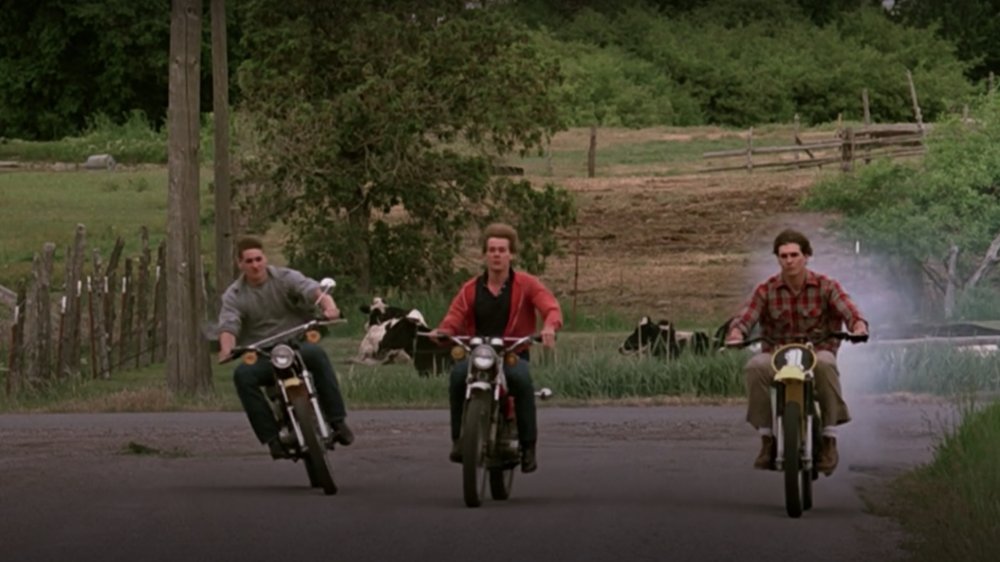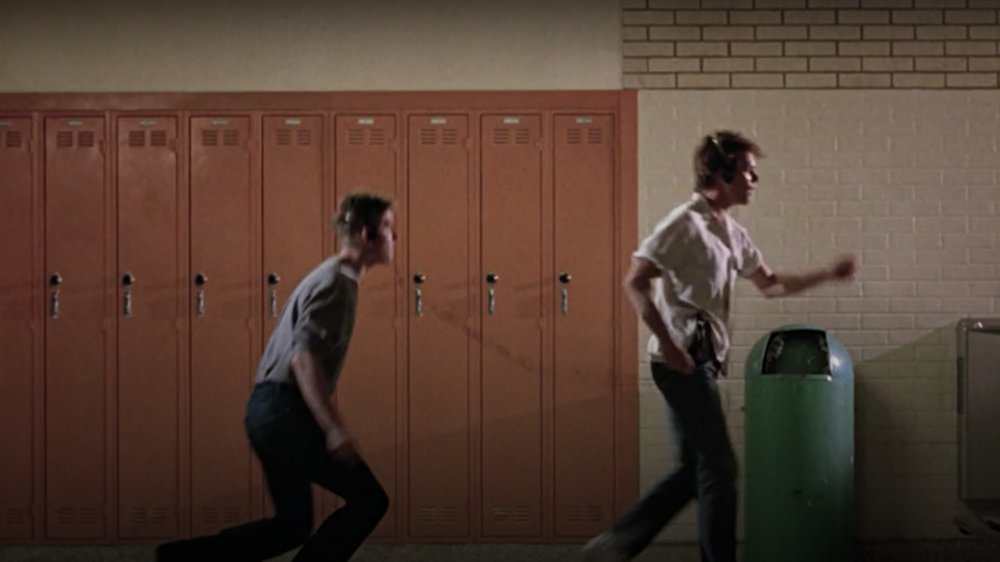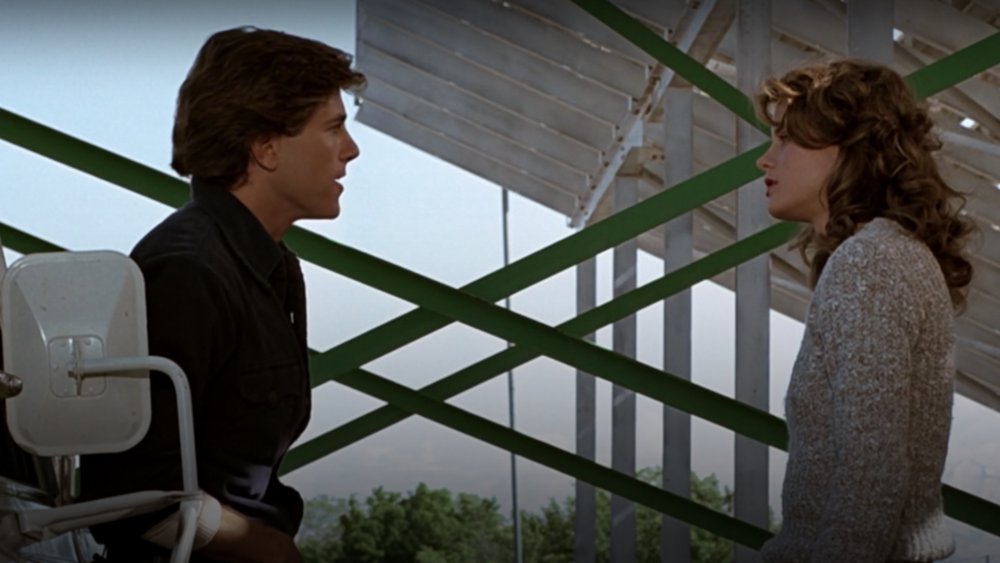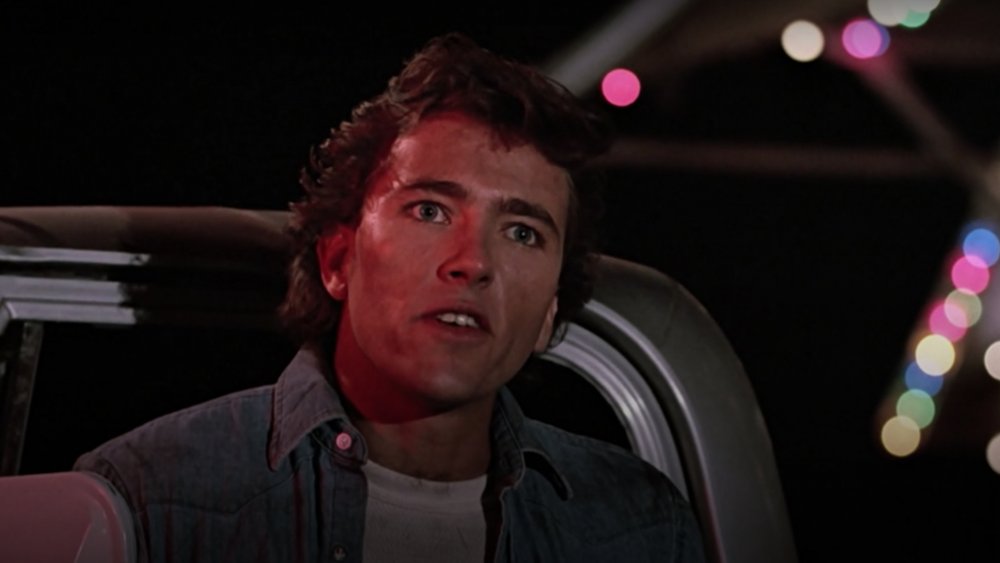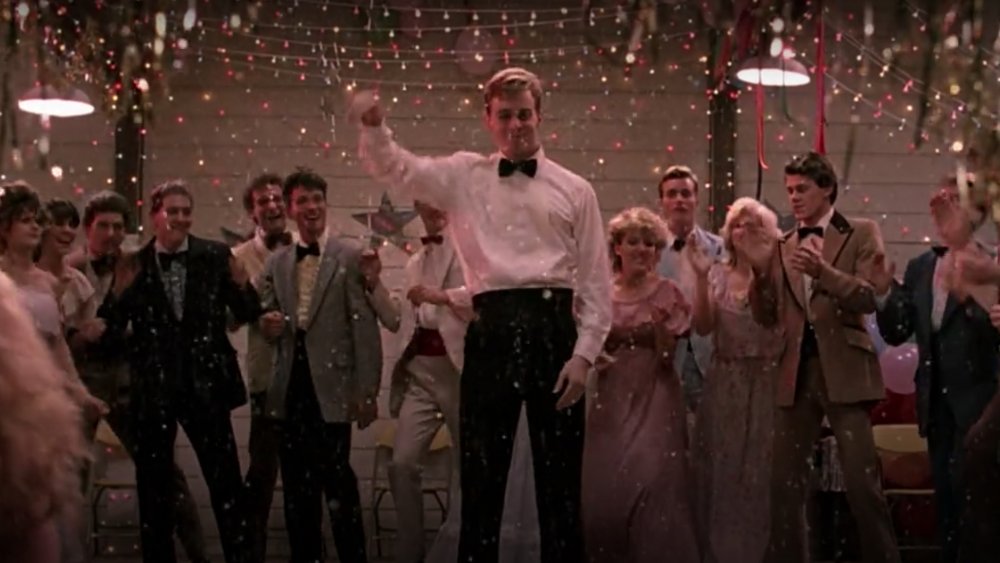Things Only Adults Notice In Footloose
The '80s were a wild time of pop culture trends like big hair, loud fashion, and timeless movies about rebellious teenagers. And few were as rebellious or timeless as Footloose, introducing us to a world where dancing was prohibited, the seeds of teen mutiny ruthlessly sown.
The 1984 musical drama Footloose follows Ren McCormack (Kevin Bacon), an uninhibited teenager from Chicago who moves to the conservative, rustic town of Bomont, Oklahoma, a place where it's literally against the law to dance or even listen to rock music. It's a premise that seems brutally archaic in 2020, yet Footloose remains as resonant a drama as it is a musical — a gift to the zeitgeist that birthed epic dance sequences and an eponymous song by Kenny Loggins. It's a movie about teenagers that resonates with adults 36 years later.
As with viewing most classic movies in retrospect, Footloose contains tidbits that might have escaped you on that first watch back in the day, and it's worthy of a revisit. Lace up your dancing shoes and cake on the hairspray, because we're here to reveal things only adults notice in Footloose.
Ren and Willard's relationship starts off rocky
The first day of school is hard, especially when you're the new kid in town and the other students view your idiosyncrasies like a science experiment gone wrong. On Ren's first day, he runs into Willard Hewitt (the late Chris Penn), a country boy in a cowboy hat. When Ren makes that cowboy hat an object of mockery, the two seem like they're on the verge of fighting — until they settle their differences and redirect that vitriol into friendship.
While violence is never the answer, one would assume (especially in 2020) that Ren and Willard's rocky meeting would have led to some extreme social distancing. But luckily for us, that wasn't their fate, because as the two become best friends, Ren selflessly shares the secrets of his dancing prowess, a 180 in conflict resolution that we rarely see in real life today.
For the record, fellow students treat Willard like a mindless fool, but he has really good insight. He knows everything about everyone, typical in a small town, but he can read people. Case in point: He says the preacher's daughter acts tough so others will forget that she's the preacher's daughter.
Kevin Bacon clearly has a dance double
Stunt doubles are endemic to filmmaking. But back in the '80s, they were sometimes embarrassingly obvious, and Footloose was no exception. During Footloose's iconic warehouse scene, it's clear that someone else took the wheel for Kevin Bacon during those too-hot-to-handle dance moves, as it's hard to not overlook how Bacon's facial features ostensibly morph throughout the scene.
Bacon discussed having a dance double for Footloose in a 2011 interview. "Are you kidding? I was furious," Bacon told People magazine when discussing his flips and complicated dance moves being a facsimile during the warehouse scene. "It's like a starting pitcher getting taken out of a game — no one wants to be told they can't get the guy out." Believe it or not, Bacon had more than one stunt double for this sequence. "I had a stunt double, a dance double and two gymnastics doubles," Bacon said. "There were five of us in the f*cking outfit, and I felt horrible."
Dance double or not, it's one of the most memorable moments of the entire movie.
The preacher's daughter appears to be the most deviant teenager
Reverend Shaw Moore (John Lithgow) plays the antagonist of Footloose as he presses to keep Ren from achieving his goals. Add in the fact that his daughter Ariel is interested in Ren, and a nightmare scenario begins building for Shaw. To make things even worse for the reverend, his daughter just might be the most deviant teenager in Bomont.
In one scene, Ariel stands upon two vehicles driving alongside each other as an oncoming semi-truck closes in. In another, her love for danger is matched by her desire to escape conformity when she plays verboten hits loud enough for the whole town to hear. She's a preacher's daughter in red cowboy boots who kisses boys, drinks alcohol, and plays her music too loud.
But Shaw is so focused on making the town a "better place" that he doesn't realize his daughter is screaming out for help. She's a rebel in her own right, but she's a smart one with a bright future. Ariel is a rebel with a cause who wants her father to notice her — while she's simultaneously repelled by him.
Cigarettes, alcohol, drugs, and sex are already present
The town of Bomont doesn't allow dancing because the adults don't want these things to occur ... but they're already, like, occurring. This town is obsessed with preventing sin, but the adults seem blind to other ungodly acts. Alcohol, cigarettes, and drugs appear constantly throughout the story. And it appears that this town has greater issues than young people doing the moonwalk. One of the teachers even catches a student passing Ren a joint. Sure, he flushes it down the toilet, but the dissonance is already made clear.
Ariel even recalls the story of the infamous bridge accident where drunk teens played car tag and plummeted off the bridge, which resulted in heavy sanctions on drinking and dancing. Yet the kids never seem to have a problem getting their hands on alcohol. While these teenagers would likely get in trouble if they were caught boozing, they still do it. They gladly, however, follow the no-dancing rule. Dancing (or the lack thereof) is a major theme of Footloose, but it's hard not to recognize other cultural norms routinely being broken. The adults canceled dancing so young people wouldn't drink, do drugs, or have sex — but Footloose showed us that dancing really had nothing to do with it.
The main characters are old enough to drink at the bar
Footloose would seem to indicate that its teenage main characters are old enough to walk into any bar and have a drink, yet they still listen to their parents, live by their rules, and, most importantly, don't dance. Although not every single high schooler in the film is of drinking age, the main core — Ren, Willard, Ariel, and Rusty (Sarah Jessica Parker) — are of legal drinking age in late 1970s Oklahoma.
When Ren wants to show his new friends what they're missing out on, he takes them to a nearby town that allows boozing and dancing, showing them the other side of a coin they never had the chance to flip. Although philosophically important, this is the point where the premise loses a bit of steam, considering that the "rebellious" teenagers who want to break the no-fun rules can simply go one town over and do whatever they want to.
Good parenting doesn't come easy in Footloose
Parenting issues are a universal struggle, and they're prevalent in Footloose. Telling young people what they can and can't do tends to push them into a more contrarian mindset, especially when the parents of the town side with a draconian fire-and-brimstone preacher.
The parents in Bomont, Oklahoma, acquiesce to the reverend's wishes — which are now the law — in the hope of increasing their kids' safety. After the town's tragic bridge accident, the adults have become collectively hidebound, and they take no chances with their children. If that means taking away rock music and dancing, then so be it ... because everyone knows rock music and dancing lead to wild, out-of-control teenagers. But alas, the parenting playbook is a hard one to execute as times change faster than anticipated, and kids, especially teenagers, embrace those seemingly extreme changes with youthful energy.
Where did all the teens get motorcycles from?
Hoverboards and fidget spinners were popular in the 2010s, recycled styles and denim were in demand during the 2000s, windbreakers and overalls were happening in the 1990s, and, based on a few scenes in Footloose, motorcycles were the "it" accessory of the late 1970s.
In a conservative town that takes precautionary measures, the local teens ironically ride around on motorcycles as if it's the new trend. As dangerous as motorcycles are, the teens up the ante by not wearing helmets — a vocal statement of teenage rebellion, coupled with the unsaid and prevailing hypocrisy.
Motorcycles are also expensive as compared to, say, a sweet denim suit. The two-wheel death machines are supposed to make the teens look cool, and they kind of do, but it's hard for a more seasoned viewer to not notice how conflicting they are to the message of keeping the kids safe, demonstrating the contradictory nature of groupthink parenting. But, by all means, ride on?
Ren is very understanding and accepting for a bad boy
Ren is a city kid from Chicago who dresses like a rock star. He's viewed as an outcast, and his differences make him a bad boy by association. But for someone who's trying to supposedly destroy this town's myopic values, he's actually a very understanding and accepting person, who drives a peaceful Volkswagen Beetle, in case the viewers didn't notice.
Bad boys aren't typically known for teaching other people how to dance, but an entire montage features Ren showing Willard how to let the dogs out on the dance floor. Ren does, however, drink and drive at the beginning of the warehouse scene, keeping his bad-boy persona intact. Most important, though, is how Ren goes about bringing dancing back to the town. He could have thrown a rager at any point in the movie, but he attended a town hall meeting to state his case, citing bible verses during his argument, and accepting defeat when the vote favored the status quo of outdated laws. Once again, Ren could have easily reacted by painting the town red, but he instead focused on brave, positive change and proceeded to ask Reverend Shaw if he could take Ariel to prom.
Chuck Cranston should be in jail
Chuck Cranston (played by Jim Youngs) is a no-good human being, a grade-A bully, and a sore loser. It's implied that he's having sex with Ariel, but their relationship was never defined. When Chuck finds out that Ariel has feelings for Ren, he ignites with jealousy. However, as a bully and a coward, he directs his insults to Ariel's reputation and personal appearance. So Ariel responds by slapping him in the face. Chuck then knocks her to the ground. Ariel takes her frustrations out by hitting his truck with a metal rod, and then Chuck retaliates by beating her up. He leaves her there and drives off.
In the next scene, Ariel talks to Ren about what Chuck did, and her face is noticeably bruised. Ren, who is, remember, a bad boy, tells her she'll be okay and doesn't initially defend her honor. Chuck presumably gets away with both assaulting a woman and abandoning her on the side of the road. Luckily, justice is served in the movie's big fight scene.
What's the point of the final fight scene?
An eventual fight between Ren and Chuck can be seen from a mile away. And, yes, Chuck deserves to get what's coming to him for what he did to Ariel. Chuck also bullied Ren throughout the movie. At the start of the showdown, Chuck recruits his goons to attack Willard. (And to think, it was on the one night he promised Rusty he wouldn't fight.) But the fight comes near the end of the movie when Ren has already solved his and fellow teenagers' problems: They're having a dance in another town. Outmatched and undersized, Ren and Willard beat up Chuck and his friends. Problem solved. They walk into the prom, and everyone dances the night away.
Ideally, this scene should have taken place sooner than it did. Nit-picky, yes, but the placement of this scene is a classic too little, too late scenario. Not to mention, Ren previously shrugged off the fact that Chuck beat Ariel up. But when he's on the verge of finally dancing it out with his friends, he has to win a fight first. After, Ariel and Rusty cheer them on, and Ren and Willard congratulate each other post-slugfest. All of this, of course, just proves the small-town residents' beliefs right ... that dancing leads to sin.
For a town that's not allowed to dance, everyone dances extremely well
In Footloose, people aren't allowed to dance in public, at home, at school, or anywhere inside the Bomont town limits. This ridiculous law has been in effect for years, and we're shown that it's strictly enforced when the reverend shuts off a boom box playing in public. All things considered, it would be safe to assume that not one high schooler in Bomot when the film takes place should know how to dance. Wrong. While, yes, Ren teaches Willard how to get jiggy with it, the entire student body otherwise appears to be professional rug-cutters. Some of them are even break-dancing. The prom-goers party like it's 1999 in the year 1978.
Of course, the ending to Footloose is bodacious and classic. These realizations don't take anything away from the flick, but they're hard to unsee once you've seen them.
